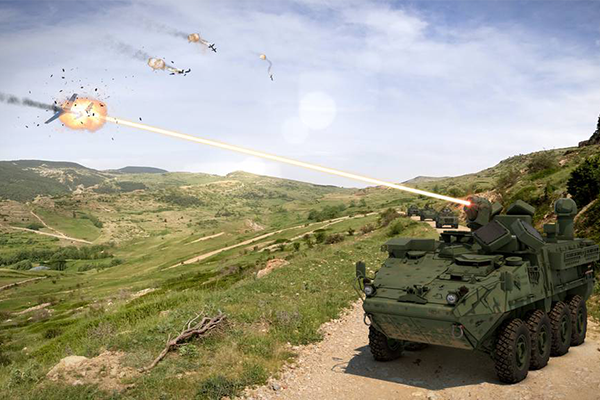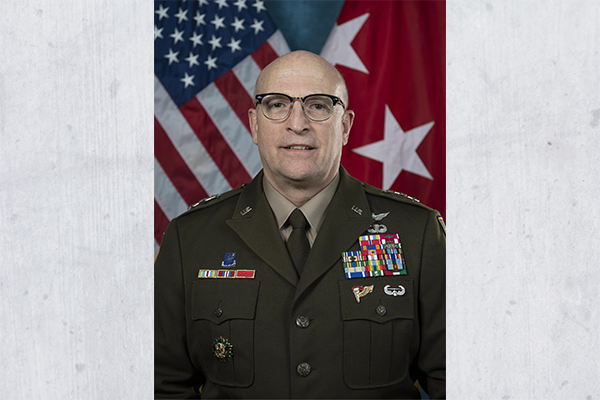WASHINGTON — The first set of Stryker combat vehicles equipped with 50-kilowatt laser weapons will be delivered to a unit of Army soldiers at Fort Sill by the end of September, according to the head of the service’s Rapid Capabilities and Critical Technologies Office.
The Army has dubbed its Directed Energy Maneuver-Short Range Air Defense (DE M-SHORAD) system “Guardian.” After testing its first prototype last spring at White Sands Missile Range, NM, against one-, two-, and three-class unmanned aircraft systems and rockets, artillery and mortars, the service is planning to conduct more tests this month, Lt. Gen. L. Neil Thurgood said January 12 at an event hosted by the Center for Strategic and International Studies.
Testing will continue through the early part of February, he added.
The Army learned from extensive soldier feedback of the first prototype at White Sands and through virtual simulation, he said. Based on that feedback, the developers have gone back and made some design changes, Thurgood noted.
The Army first awarded a contract in mid-2019 to Kord Technologies, a KBR subsidiary, to serve as the prime contractor for the first set of prototypes.
Kord subsequently awarded subcontracts to Northrop Grumman and Raytheon Technologies to compete to supply the laser module.
The competition was intended to culminate in a shoot-off between those companies’ respective teams. Kord and the Army were slated to then agree on a winner and proceed with integration of the chosen laser module onto three more Strykers to make a platoon’s worth of directed energy-capable SHORAD systems.
But Northrop experienced problems with the power and thermal management system supplied by Kord when integrated with its system, and a fire broke out during testing late last year. Problems persisted into the new year, and Northrop dropped out before the demonstration.
The Raytheon team moved on to demonstrate its system, and the Army chose to go forward with those prototypes.
Raytheon Intelligence & Space in McKinney, Texas, was awarded a $123 million contract in September 2021 to build and deliver three additional combat-capable 50kW-class high-energy laser weapon systems as part of the U.S. Army’s Directed Energy Maneuver-Short Range Air Defense program. The systems will be mounted on Stryker combat vehicles the Army plans to deploy for field operations in 2022, Raytheon reported.
The Army is expected to reopen the competition because the system is considered critical in future operations. DE M-SHORAD will offer protection to maneuvering ground forces and equipment from threats such as unmanned aircraft systems, rotary-wing aircraft, and rockets, artillery and mortars, according to Raytheon.
Lockheed Martin announced at the Association of the U.S. Army’s annual conference last October it would compete if the Army moves forward with a new competition next year.
Taking its experience from other laser weapons programs — including the airborne laser weapon for the Air Force and a 300-kilowatt-class laser under development for the Army’s indirect fires protection capability (IFPC) as part of a team with Dynetics — Lockheed is scaling its laser technology into an offering it calls DEIMOS.
The Dynetics and Lockheed team is slated to deliver an IFPC high-energy laser technology demonstrator in fiscal 2022; four prototypes are due at the end of FY24.
Jen Judson is the land warfare reporter for Defense News. She has covered defense in the Washington area for 10 years. She was previously a reporter at Politico and Inside Defense. She won the National Press Club’s best analytical reporting award in 2014 and was named the Defense Media Awards’ best young defense journalist in 2018.



